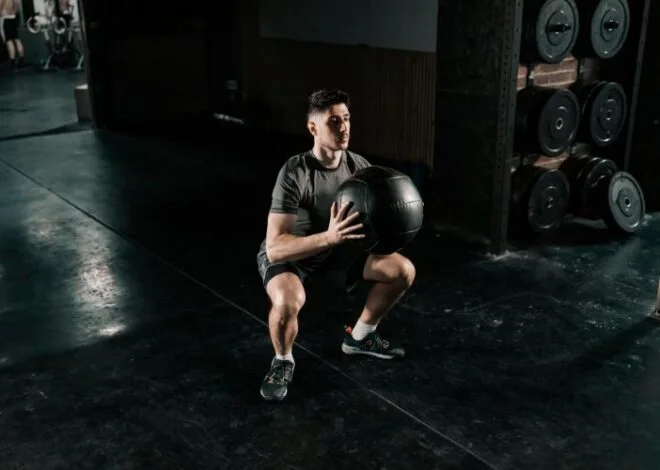
Flat Bench Workouts The Ultimate Guide

The flat bench press is a cornerstone exercise in weight training and bodybuilding, renowned for building upper body strength and muscle mass. Its simplicity and effectiveness make it a staple in gyms worldwide. In this comprehensive guide, we’ll explore flat bench workouts, the muscles they target, benefits, variations, common mistakes, and tips to maximize your results.
Understanding the Flat Bench Press Workout
The flat bench press is a compound exercise that primarily targets the chest muscles, but it also engages the shoulders, triceps, and stabilizing muscles. It involves lying on a flat bench, gripping a barbell or dumbbells, and pressing the weight upward. While it’s simple in concept, mastering the movement requires proper technique and control.
Muscles Worked in the Flat Bench Press
- Pectoralis Major: The primary muscle activated during the bench press, responsible for chest development.
- Anterior Deltoids: The front shoulder muscles that assist in pressing motions.
- Triceps Brachii: Located on the back of the upper arms, these muscles extend the elbows during the lift.
- Serratus Anterior and Stabilizers: Smaller muscles that aid in stabilizing the movement.
By incorporating variations of the flat bench press, you can target specific areas of these muscles for a well-rounded chest workout.
Benefits of Flat Bench Workouts
1. Builds Upper Body Strength
The flat bench press allows you to lift heavy weights, promoting strength gains in the chest, shoulders, and triceps. Regular practice improves overall pressing power, which translates to better performance in other exercises and daily activities.
2. Enhances Muscle Mass
By progressively increasing the load, the flat bench press stimulates hypertrophy, leading to muscle growth. It’s a key exercise for anyone aiming to build a bigger and stronger chest.
3. Functional Fitness
The bench press mimics pushing movements used in sports and daily life, such as throwing, shoving, or moving heavy objects.
4. Versatility
The flat bench is not just for the barbell bench press. It’s a platform for various exercises using dumbbells, resistance bands, or bodyweight.
Flat Bench Workout Variations
1. Barbell Flat Bench Press
The classic version, this exercise allows for heavy lifting and is ideal for building maximum strength and mass.
How to Do It:
- Lie on the bench with your eyes directly under the barbell.
- Grip the bar slightly wider than shoulder-width.
- Unrack the bar, lower it to your chest, and press it back up to the starting position.
Tips:
- Keep your feet flat on the floor for stability.
- Avoid flaring your elbows excessively to reduce shoulder strain.
Flat Bench Workout Variations
1. Barbell Flat Bench Press
The classic version, this exercise allows for heavy lifting and is ideal for building maximum strength and mass.
How to Do It:
- Lie on the bench with your eyes directly under the barbell.
- Grip the bar slightly wider than shoulder-width.
- Unrack the bar, lower it to your chest, and press it back up to the starting position.
Tips:
- Keep your feet flat on the floor for stability.
- Avoid flaring your elbows excessively to reduce shoulder strain.
2. Dumbbell Flat Bench Press Workout
Using dumbbells allows for a greater range of motion and helps correct muscle imbalances.
How to Do It:
- Lie on the bench holding a dumbbell in each hand.
- Lower the dumbbells to chest level, ensuring they move in a controlled manner.
- Press them back up until your arms are fully extended.
Tips:
- Keep the movement smooth and avoid locking out your elbows.
- Focus on engaging the chest muscles throughout the exercise.
3. Close-Grip Bench Press
This variation shifts the emphasis to the triceps while still engaging the chest and shoulders.
How to Do It:
- Use a narrower grip on the barbell, about shoulder-width apart.
- Lower the bar to your chest and press it back up.
Tips:
- Keep your elbows tucked close to your body.
- Use lighter weights initially to master the form.
4. Flat Bench Flyes Workout
Flyes isolate the chest muscles, making them an excellent addition to your workout for definition and muscle shaping.
How to Do It:
- Hold a dumbbell in each hand and lie flat on the bench.
- Extend your arms above your chest with a slight bend in the elbows.
- Lower the dumbbells out to the sides in a wide arc, then bring them back to the starting position.
Tips:
- Keep the movement slow and controlled to avoid shoulder injuries.
- Focus on squeezing your chest at the top of the movement.
5. Floor Press
The floor press is a bench press variation performed lying on the floor, limiting the range of motion to emphasize the triceps and reduce shoulder strain.
How to Do It:
- Lie on the floor with a barbell or dumbbells.
- Lower the weights until your elbows touch the floor, then press back up.
Tips:
- Use this exercise to break through sticking points in your bench press.
Creating a Flat Bench Workout Routine
Here’s a sample flat bench workout routine designed for intermediate lifters:
Warm-Up
- Dynamic stretches for shoulders and chest (5 minutes)
- Light bench press set (2 sets of 10 reps with an empty bar or light weight)
Main Workout
- Barbell Flat Bench Press: 4 sets of 8-12 reps
- Dumbbell Flat Bench Press: 3 sets of 10-12 reps
- Close-Grip Bench Press: 3 sets of 10-12 reps
- Flat Bench Flyes: 3 sets of 12-15 reps
Cool Down
- Static stretches for the chest, shoulders, and triceps (5-10 minutes)
- Foam rolling to release muscle tension
Common Mistakes in Flat Bench Workouts
1. Arching the Lower Back
While some arching is natural, excessive arching can strain your lower back. Focus on maintaining a neutral spine.
2. Flaring Elbows
Flaring your elbows out to 90 degrees can increase the risk of shoulder injuries. Keep them at a 45-70 degree angle relative to your torso.
3. Bouncing the Barbell
Using momentum by bouncing the barbell off your chest reduces effectiveness and increases injury risk. Lower the weight in a controlled manner.
4. Neglecting Warm-Up and Mobility
Skipping a proper warm-up can lead to poor performance and increased injury risk. Always prepare your body for the workout.
Tips for Progressing in Flat Bench Workouts
1. Focus on Progressive Overload
Increase the weight or the number of reps gradually to challenge your muscles and stimulate growth.
2. Incorporate Accessory Exercises
Strengthen supporting muscles like the triceps and shoulders with exercises like dips, overhead presses, and skull crushers.
3. Prioritize Form
Good technique is crucial for safety and effectiveness. If necessary, lower the weight to ensure proper execution.
4. Use Spotters and Safety Equipment
When lifting heavy, always use a spotter or safety pins on the bench rack for added security.
5. Plan Your Rest and Recovery
Allow adequate time for recovery between workouts to prevent overtraining and promote muscle repair.
Flat Bench Workouts for Different Goals
For Strength
- Focus on lower reps (3-6) with heavier weights.
- Incorporate longer rest periods (2-3 minutes).
Muscle Growth
- Use moderate reps (8-12) and moderate-to-heavy weights.
- Include variations like dumbbell presses and flyes.
Endurance
- Perform higher reps (15-20) with lighter weights.
- Minimize rest periods to maintain intensity.
Advanced Flat Bench Workout Variations
1. Tempo Bench Press
Control the tempo of the movement (e.g., 3 seconds to lower, 1 second to press up) to increase time under tension.
2. Spoto Press
Pause the barbell just above your chest before pressing up, focusing on maintaining control and tension.
3. Resistance Band Bench Press
Add resistance bands to the barbell for variable resistance, challenging your muscles throughout the lift.
The flat bench press workout and its variations are fundamental to building strength, size, and functionality in your upper body. By incorporating different exercises, focusing on form, and following a structured routine, you can achieve impressive results. Whether you’re a beginner or an advanced lifter, the flat bench offers endless possibilities to progress and challenge yourself.
Consistency, patience, and proper technique are the keys to unlocking the full potential of your flat bench workouts. So, grab a barbell or a pair of dumbbells, hit the bench, and start pushing toward your fitness goals!














